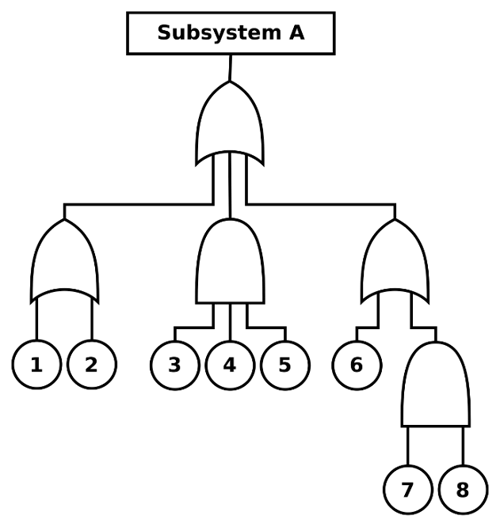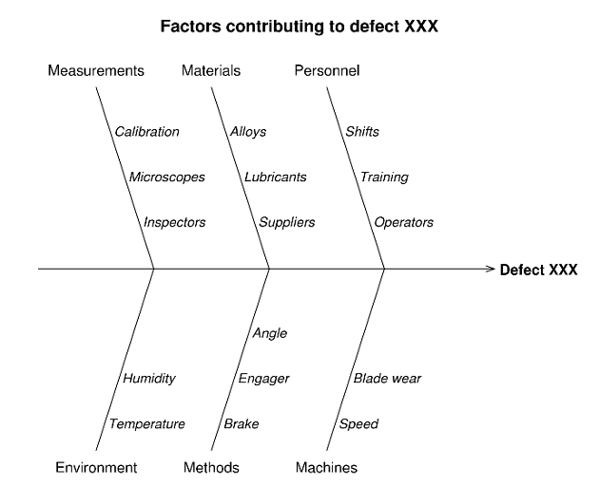If your organization is looking to create a structured problem management capability. Or is perhaps looking to improve upon the security management or problem management status quo within your organization. Then this blog is for you. In it, you’ll find four problem management root cause analysis techniques described in sufficient detail to understand what they are and how they help. Along with popular links to more detailed technique-related information.
Please keep reading to find out more about four of the most popular root cause analysis techniques that are available to facilitate your new or improved problem management capabilities.
Popular problem management techniques
The latest ITIL 4 guidance calls out the following problem management techniques:
- “Root cause analysis techniques, such as 5 Whys, Kepner and Fourie, and fault tree analysis
- Impact analysis techniques, such as component failure impact analysis and business impact analysis
- Risk analysis techniques.”
Source: AXELOS, Problem Management ITIL 4 Practice Guide (2020)
Each of the three root cause analysis techniques is explained in the sections below.
5 Whys
The 5 Whys technique was developed in the 1930s and became popular in Japanese manufacturing in the 1970s. The technique fits with the Toyota Genchi Genbutsu and Gemba philosophies where there’s a need to understand what’s happening “on the shop floor.”
The 5 Why technique itself is pretty simple. When there’s a problem to address, “Why?” is asked five times to drill down deep enough to establish the problem’s root cause(s). From this, a remedy can then be established and implemented.
One word of warning though. The 5 Whys technique is best used on simple to moderately difficult problems and is likely unsuitable for more complex problems. This is because the technique tends to limit the analysis to just one avenue, or limited avenues, of root cause identification. Whereas the problem might have many root causes, some of which will be missed by employing the 5 Whys technique.
Kepner and Fourie Critical Thinking
The Kepner and Fourie Critical Thinking approach, or model, uses a template with structured questions. This quickly guides people through an analysis phase, encouraging them to “ask the right questions” of “the right people” when gathering information and data. This is intended to prevent the all-too-common approach of problem solvers starting with an evaluation of the possible resolution options.
When using the Kepner and Fourie approach, there are four key steps for solving a problem:
- Stating the problem and agreeing on what the problem is
- Gathering information
- Organizing and analyzing the information
- Drawing a conclusion.
You can find out more about the Kepner and Fourie Critical Thinking method on the Kepner-Fourie.com resources page.
Fault tree analysis
Fault tree analysis is a root cause analysis technique where people take an event or problem and visually log all the possible reasons that could have caused it to occur. As per the example below, the event or problem sits at the top of the tree, with the investigation taking a top-down approach.
This analysis method is mainly used in safety engineering and reliability engineering to understand how systems can fail, to identify the best ways to reduce risk and to determine (or get a feeling for) event rates of a safety accident or a particular system level (functional) failure. With the latter achieved through the addition of probabilities to tree components.
An example fault tree analysis diagram

Source: Wikipedia
Ultimately, fault tree analysis is a deductive method that allows for a deeper understanding of a problem in the pursuit of the root cause(s) via a visual representation of how the problem or an associated event occurred.
You can find out more about fault tree analysis on Wikipedia.
A bonus root cause analysis technique: Ishikawa diagrams
While not mentioned in the above ITIL 4 extract, there are many other root cause analysis techniques available to people tackling problems. These include:
- Chronological analysis
- Ishikawa (or fishbone or cause and effect) diagrams
- Pareto analysis
- Pain value analysis
- Structured brainstorming.
Of these, Ishikawa diagrams are probably the most well-known. This technique combines mind mapping and brainstorming to create a visual “cause and effect” diagram. It intends to get people to consider all of the possible causes of a problem and not just the most obvious.
The technique was original created for quality control purposes but is now used for various scenarios, including:
- Root cause analysis for problems
- Identifying bottlenecks in processes
- Understanding where and why processes aren't working.
An example Ishikawa diagram is shown below.
Example Ishikawa diagram

Source: Wikipedia
When creating an Ishikawa diagram within a group of people, it’s common for participants to write down their ideas/potential causes on post-it notes which can then be grouped as per the vertical “fishbones” in the diagram above.
You can find out more about Ishikawa diagrams on Wikipedia.
Hopefully, the above information on root cause analysis techniques is helpful. If you have anything to add or any questions, then please use the comments section below.














.jpg?upsize=true&upscale=true&width=780&height=205&name=ITIL%20Foundation%20Exam%20(2).jpg)
